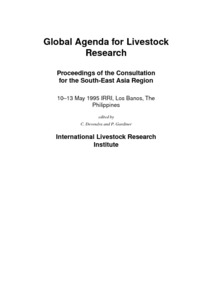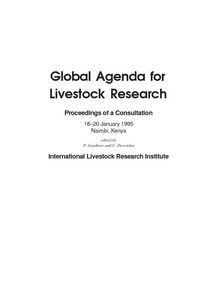Animal production systems in south-east and east Asia. Potential and challenges for research
Animal production systems in South-East and east Asia are discussed in the context of their potential and challenges for research to address poverty alleviation, increased food production and food security and environmentally sustainable development.
Fodder bank: Improving the nutrition of cattle in the subhumid zone of West Africa
ILCA acknowledged the potential for increased animal agriculture in the subhumid zone of West Africa by establishing a research base at Kaduna in northern Nigeria. FulBe agropastoralists were selected at the target group because they own most of the cattle in the zone and cattle are the predominant livestock, at least in terms of biomass and traded products.
Foraging behaviour of cattle grazing semi-arid rangelands in the Sahel of Mali
This paper deals with foraging behaviour of cattle grazing semi-arid rangelands in the Sahel of Mali. It discusses the location of study site, vegetation in the grazing orbit, herd management and livestock behaviour.
Global agenda for livestock research. Proceedings of the consultation for the South-East Asia region
The papers presented here by the group covering the states of the Association of South East Asian Nations (ASEAN) had detailed discussions on defining the livestock priorities, research requirements, and ways to achieve these with a focus on Indonesia, Malaysia, the Philippines and Thailand. Discussions were conducted in three sequential phases.
Global agenda for livestock research: Proceedings of a consultation
The objectives of this consultation are to identify priority requirements for improved livestock productivity and development of the sustainable production systems in the developing regions; to identify cross-regional priorities, major constraints, the researchable areas and issues in livestock production most likely to bring distinct benefits and impacts; and to assist identification of partic
ILCA 1993/94: Annual report and programme highlights
This report highlights ILCA's work in the past, and discusses current activities and future plans with particular reference to mixed crop-livestock systems, market-oriented smallholder dairying, conservation of biodiversity, biological efficiency of livestock, livestock production under trypanosomiasis risk, livestock and resource management policy, and strengthening national research capacitie
ILRI 1995: Building a global research institute
Impact of human activities and livestock on the African environment: An attempt to partition the pressure
The impact of human endeavours on the environment in the struggle to eke out a living through crop and animal agriculture is examined in a holistic context. Analyses focus on all the sources of pressure that modify the vegetation cover of rural Africa, including the effects of fires and burning of biomass, fuel wood extraction and deforestation and land clearing.
Livestock and sustainable nutrient cycling in mixed farming systems of sub-Saharan Africa. Volume II: Technical papers. Proceedings of an international conference
Achieving sustainable increases in agricultural production in sub-Saharan Africa is both a regional and a worldwide concern. High human and animal population densities in some areas have surpassed
Livestock development strategies for low income countries. Proceedings of a roundtable
This volume contains an executive summary of papers and the discussions on them as well as the reports of working groups and the recommendations of the Roundtable on Livestock Development strategies for Low Income Countries.
Organizing for local-level watershed management : lessons from Rio Cabuyal watershed, Colombia
Watershed management involves the integrated management of a multitude of resources such as crop land, pastures, forests and water to each of which a multitude of often conflicting interests relate. These interests arise from stakeholders inside as well as outside the watershed. The identification and negotiation of these interests therefore is an important element in watershed management.











